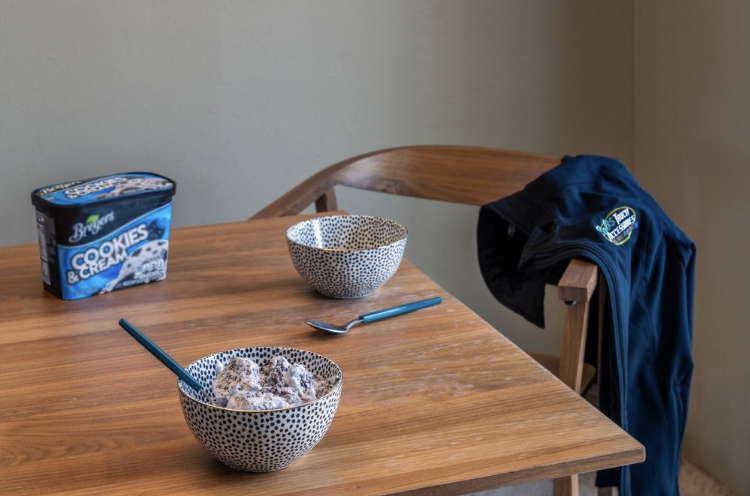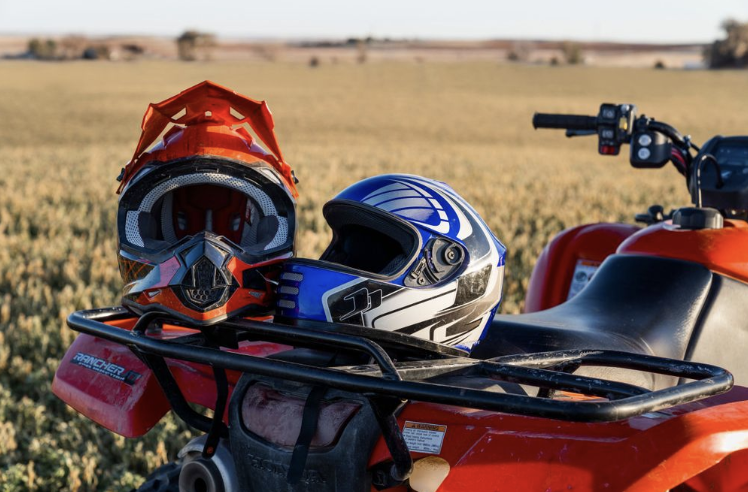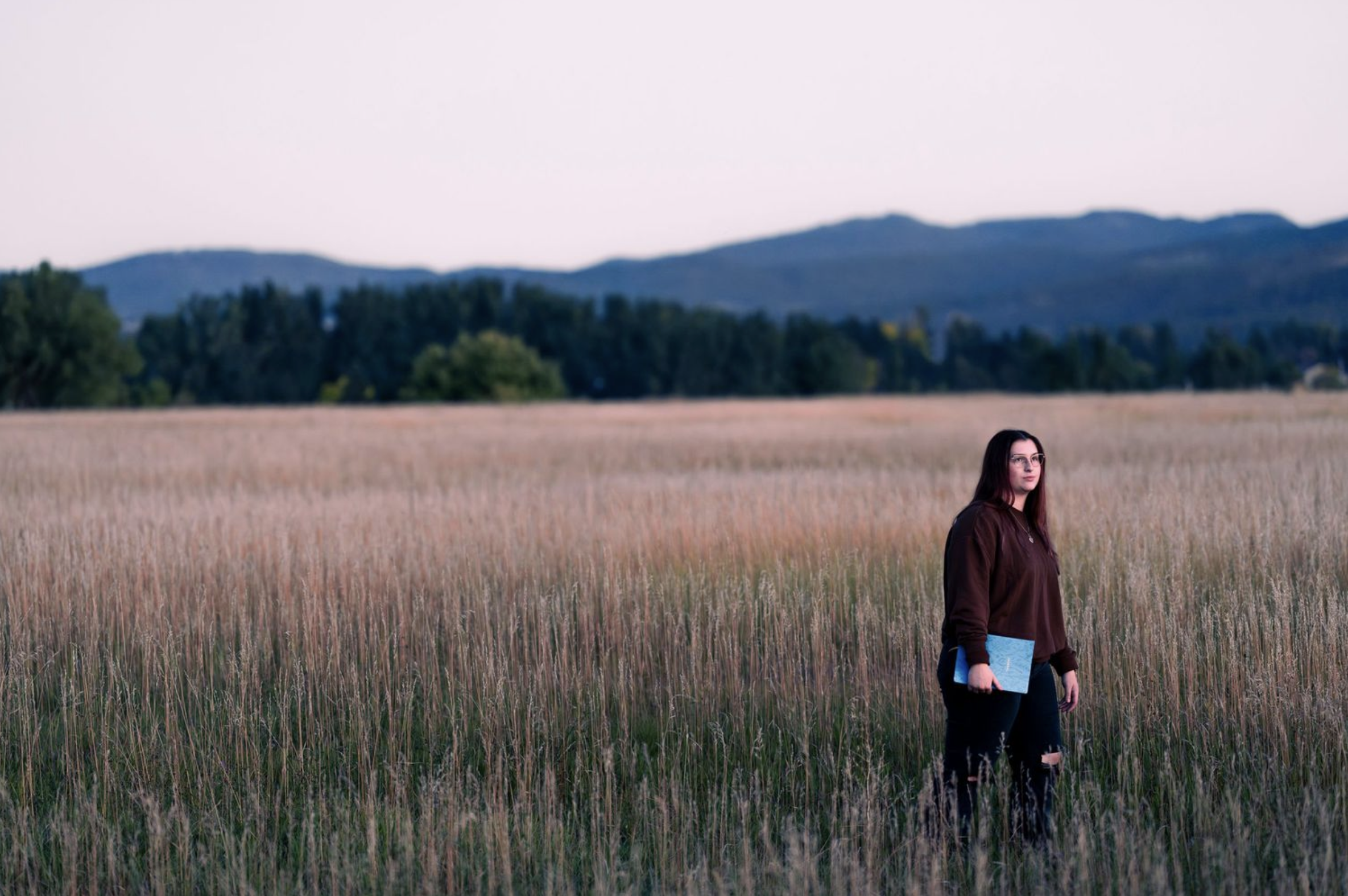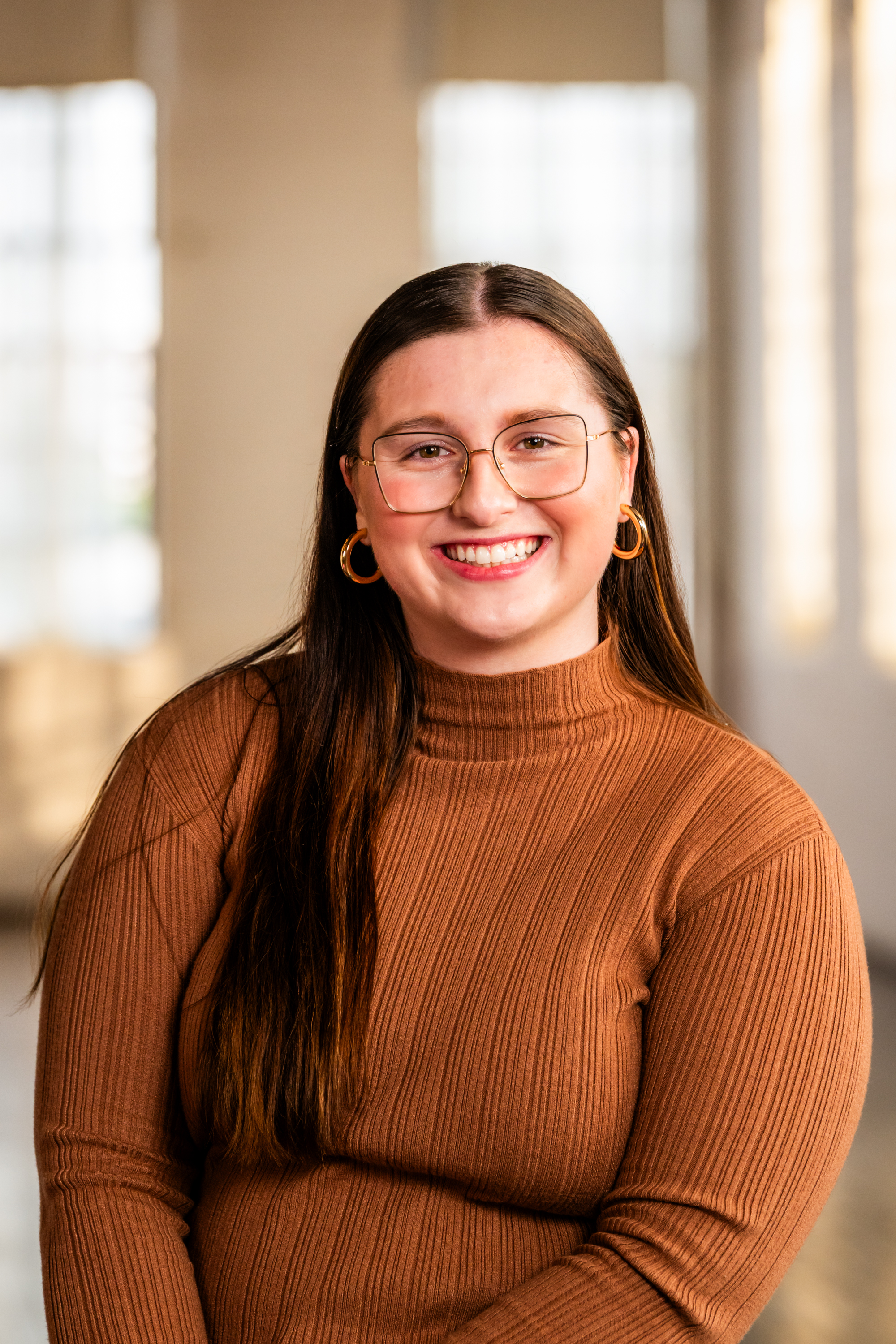Hope Schumacker imagined she’d be a teacher, or maybe work in marketing. Even though
she’d been doing photography since she was six, she thought of her creative work as
just another hobby, like her father’s passion for building cars. Things changed in
her senior year of high school, when a photography teacher recommended Hope submit
one of her photos to an upcoming competition. A top 10 finish encouraged her to begin
thinking about pursuing photography professionally. Four years later and armed with
a BFA from Black Hills State University (BHSU), Hope works with businesses of all
sizes and pours the same care into each assignment.
Hope grew up in Devils Lake, North Dakota, about an hour from the Canadian border.
She spent weekends going to the racetrack with her father, who was a mechanic. She
credits her small-town upbringing for instilling “good morals” in her but says that
she dreamed of leaving North Dakota. “I was always watching TV and movies, and I was
like ‘there’s a whole world out there,’” she said. “I drive by cows and cornfields
every day, but there’s so many other experiences and opportunities.”
After graduating high school, Hope’s search for those opportunities brought her to
Spearfish. “Right away when I stepped on campus at BH, I didn’t feel like just another
person. I felt like they actually wanted to hear from me.” That, coupled with the
university’s affordable tuition, made the college decision easy.
Midway through her studies at BHSU, Hope returned to Devils Lake to mourn the death
of her father. Her grief inspired an exhibit called Love, Hopey, which was displayed in her senior year. The exhibit consists of 20 photos that visually
explore Hope’s grief. Pictures of an uneaten bowl of ice cream and an unused grill
show her father’s absence. The objects appear in pairs—there are two motorcycle helmets,
two bowls of ice cream, and two fishing rods. One item in each set belongs to her,
and the other belonged to her father. Since both objects in each pair are unused,
the exhibit suggests that the absence of Hope’s father has diminished Hope’s interest
in the things she once did with him, fishing, biking, and eating ice cream. But the
last photograph shows her standing in a field, demonstrating her persistence through
grief. Hope says that when the exhibit was displayed, that strangers who saw their
own grief in Hope’s hugged her. “What we’re creating in the moment, it really feels
like it’s for us,” Hope said, “but it’s actually for such a bigger purpose.”
Hope credits two of her BHSU professors, Scott Chandler and Allen Morris, for helping
her create during the grieving process. “Being able to create a body of work with
people who were there every step of the way was really special and important to me,”
she said. “And they really understand how to push you in ways and make you better,
but they also know how to take a step back when you just need support.”
Hope’s creative interests aren’t limited to photography. A minor in art allowed her
to pursue those passions without the need to turn them into a career. “For me, doing
physical art that’s not just digital really helps me stay creative in a different
way,” she said.
After graduation, Hope moved to Atlanta, Georgia, to be a commercial photographer.
She had already done an internship with her friend and mentor, Lauren Hubbard, who
is based in Atlanta, so the city seemed like an obvious fit. There, Hope alternates between roles as lead photographer, photography assistant, production
assistant, videographer, and social media manager. This range of experience has allowed
her to be part of crews on larger-scale projects for brands like Adidas, Emory Healthcare,
and Delaware North. She says she values the opportunity to contribute behind the scenes
and sees firsthand how essential each person is in bringing a project to life.
Hope is especially passionate about working with small to mid-sized businesses in
the food, beverage, and health and wellness spaces. She consistently photographs for
a local massage therapist and has worked with several healthcare professionals, and
finds real joy in helping them visually tell their story. She says that commercial photography jobs have strict deadlines and specifications.
But having spent four years competing photography assignments that required the same
things, she’s well equipped for her new career.
In Georgia, Hope found a community of photographers that supports each other. She
remains a member of the Society for Photographic Education and Focus on Women, an
organization for female photographers, and is also the director of the Atlanta chapter
of American Photographic Artists. She says it’s remarkable that rather than being
“competition-oriented,” photographers in Atlanta “really just want to see each other
succeed.” She likens her new community to the one she found at BHSU. “I like to be
involved with community,” she said. “I always say I would go to college forever if
it were free.”
When asked about her dream photography job, she said that she would love to work with
health and wellness brands. In particular, she’d like to work with BlenderBottle,
a company that manufactures water bottles, of which she says she has “way too many.”
She’s started work on a new fine art exhibit that will juxtapose her old home, Devils
Lake, with her new home, Atlanta. But at the moment she’s focusing on building a strong portfolio and her clientele.
 Hope expressed her grief visually by photographing the things she loved to do with
her father. Credit: Hope Schumacker
Hope expressed her grief visually by photographing the things she loved to do with
her father. Credit: Hope Schumacker The passing of her father inspired Hope’s fine art exhibit, Love Hopey. Credit: Hope
Schumacker
The passing of her father inspired Hope’s fine art exhibit, Love Hopey. Credit: Hope
Schumacker  Hope’s exhibit demonstrates her persistence through grief. Credit: Hope Schumacker
Hope’s exhibit demonstrates her persistence through grief. Credit: Hope Schumacker Hope Schumacker ‘24, graduated BHSU with a BFA in photography. Credit: Hope Schumacker
Hope Schumacker ‘24, graduated BHSU with a BFA in photography. Credit: Hope Schumacker